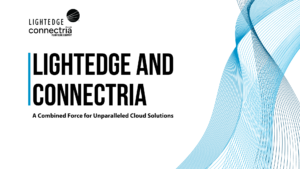The only way to make your business successful is by keeping productivity levels high. While this may seem like a relatively easy thing to do, it is anything but. One of the main causes of low productivity levels is technology-induced downtime. In fact, IT downtime costs business owners nearly $2 million a year in lost productivity.
Staying ahead of tech problems is difficult if you do not have the right tools in place. One of the best ways to catch issues before they cause too many problems is by investing in network monitoring.
Allowing IT professionals to help set up and maintain a network monitoring system is a great idea. Without their help, you run the risk of leaving your network exposed. Here are some of the things you need to consider when it comes to effective network monitoring.
Continuous Monitoring is a Must
Some business owners fail to realize that cyber-criminals can attack their network at any time of day. While monitoring your network during regular business hours is important, you need to think about how protected it is when you are not around. Instead of letting afterhours hacking attempts lead to network instability and data breaches, you need to work on instituting 24x7x365 network monitoring.
The biggest misconception that entrepreneurs have is continuous monitoring will require them to work harder or pay more to their staff. In reality, there are tons of automated network monitoring programs on the market that require no supervision.
If you dive into some information security best practices, you’ll quickly see how these automated systems work and how beneficial they can be. By continuously monitoring your network, you can stay one step ahead of hackers.
Mapping Out Your Network Architecture is Important
Before you choose a network monitoring solution for your business, you need some information. One of the main things you need to do before choosing a monitoring solution is to get a comprehensive list of the components on your network. Knowing how many routers, switches, and endpoints you have is crucial. Without this information, you will have a very hard time getting the right monitoring tools.
If you simply do not have the time or know-how to map out your network manually, there are a number of software programs that can help you out. With this software, you can create a diagram of your network in just a few minutes.
These tools also provide you with information regarding which network devices are up and which are down. This information can help you figure out where you need to start when it comes to troubleshooting a network outage.
Be Sure to Monitor Bandwidth Utilization
Network monitoring is not just about keeping hackers at bay. If you are concerned with the overall speed and functionality of your business network, finding a way to monitor bandwidth utilization is important.
There are tons of programs on the market that allow you to collect IP traffic information. This information allows you to see who is using the majority of your network’s bandwidth and what they are using it for.
For instance, if your network is getting slower with each passing day and you see a particular employee is streaming video on a continuous loop, you need to address this. Also, monitoring bandwidth utilization can help you discover malware and spyware programs.
The longer these viruses are allowed to linger on your network, the more damage they will ultimately do. Having a comprehensive virus scanning and removal software program is important. These programs are designed to make keeping your network safe much easier.
Developing an Escalation Plan
One of the best ways to find out about network problems is through real-time notifications from the monitoring software you are using. Once you have installed a monitoring program, you need to work on limiting the amount of exception-based notifications that are produced. If you receive notifications for every little thing this software finds, it will get pretty annoying after a while.
If you eliminate useless notifications, you can handle the more important problems you are presented with. Having an escalation plan on file is also important when trying to act on a particular network threat.
Working with your IT team is the best way to figure out the details of this escalation plan. Once you have this plan in place, every member of your staff will know not what to do in the event of an external network threat.
Upgrading Your Core Hardware May Be Necessary
When trying to get the right network monitoring solution in place, you need to take a good look at the routers, switches, and firewalls you have in place. If these components are outdated, it will be very difficult to adequately monitor them.
Some business owners think that they can update a piece of network hardware regardless of how old it is. In reality, it is usually easier and more cost-effective to upgrade to a hybrid cloud solution.
If you feel like you need to replace a piece of hardware, do not skimp on the quality of the replacement to save money. Buying cheaper network hardware components can come back to haunt you in the long run.
These components may not function wells, which means your network speed and reliability will suffer as a result. Taking the time to research the various hardware components at your disposal is the best way to figure out which ones are the right fit for your needs. The time you invest in this research process will pay off.
Consulting with IT Professionals
When you are ready to take your network monitoring to the next level and rise above the competition, then you need to work with an experienced technology provider. With the help of experienced IT professionals, you will have no problem getting the right network monitoring tools in place. With the addition of these tools, you can stay one step ahead of things like network outages and hackers who are attempting to infiltrate your network and steal sensitive data.
LightEdge is your Guide to Guaranteed Uptime
When asked about our differentiators against the competition, one of the first answers is always – our network. Our history with network goes all the way back to 1996 when we were founded as an ISP. We spent over two decades making sure our network and infrastructure were scalable, redundant, and secure enough to meet the most challenging IT needs.
Today, we’ve narrowed in our primary focus to our Tier III data centers and compliant cloud offerings, but there’s no doubt our networking heritage still runs strong in all that we execute. All of LightEdge’s facilities and services have been designed around connectivity with proven insight from our networking experts, making us unmatched in the market.
Strengthen your company’s risk mitigation and compliance story with LightEdge’s Managed Security services. With access to LightEdge’s people, processes, and technology, you can reduce vulnerabilities, eliminate blind spots in your security strategy, and quickly respond to security threats when they occur.
LightEdge offers a free risk assessment from our Chief Information Security Officer as a free resource to all of our clients. LightEdge’s highly trained compliance and network security experts take the guesswork out of keeping your business protected. LightEdge’s top priorities include compliance and network security to guarantee that our customer’s data is protected. LightEdge is compliant with:
Have you heard enough? Reach out to one of our LightEdge Network Experts today at: info@lightedge.com or call 1-877-771-3343.
We have empowered hundreds of organizations across the nation through improved latency, security, and reliability. We are ready to do the same for yours.




